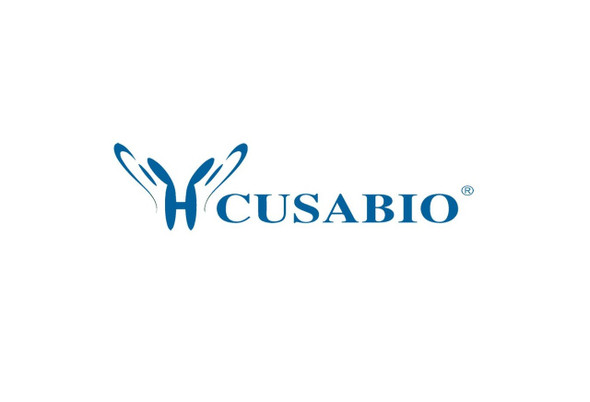Cusabio Human Recombinants
Recombinant Human Membrane-associated phosphatidylinositol transfer protein 1 (PITPNM1), partial | CSB-RP019954h
- SKU:
- CSB-RP019954h
- Availability:
- 13 - 23 Working Days
Description
Recombinant Human Membrane-associated phosphatidylinositol transfer protein 1 (PITPNM1), partial | CSB-RP019954h | Cusabio
Alternative Name(s): Drosophila retinal degeneration B homologPhosphatidylinositol transfer protein, membrane-associated 1 ;PITPnm 1;Pyk2 N-terminal domain-interacting receptor 2 ;NIR-2
Gene Names: PITPNM1
Research Areas: Transport
Organism: Homo sapiens (Human)
AA Sequence: MLIKEYHILLPMSLDEYQVAQLYMIQKKSREESSGEGSGVEILANRPYTDGPGGSGQYTHKVYHVGSHIPGWFRALLPKAALQVEEESWNAYPYTRTRYTCPFVEKFSIEIETYYLPDGGQQPNVFNLSGAERRQRILDTIDIVRDAVAPGEYKAEEDPRLYHSVKTGRGPLSDDWARTAAQTGPLMCAYKLCKVEFRYWGMQAKIEQFIHDVGLRRVMLRAHRQAWCWQDEWTELSM
Source: E.coli
Tag Info: N-terminal GST-tagged
Expression Region: 1-238aa
Sequence Info: Partial
MW: 54.5 kDa
Purity: Greater than 90% as determined by SDS-PAGE.
Relevance: Regulates RHOA activity, and plays a role in cytoskeleton rodeling. Necessary for normal completion of cytokinesis. Plays a role in maintaining normal diacylglycerol levels in the Golgi apparatus. Binds phosphatidyl inositol phosphates (in vitro). May catalyze the transfer of phosphatidylinositol and phosphatidylcholine between mbranes . Necessary for maintaining the normal structure of the endoplasmic reticulum and the Golgi apparatus. Required for protein export from the endoplasmic reticulum and the Golgi. Binds calcium ions.4 Publications
Reference: Human chromosome 11 DNA sequence and analysis including novel gene identification.Taylor T.D., Noguchi H., Totoki Y., Toyoda A., Kuroki Y., Dewar K., Lloyd C., Itoh T., Takeda T., Kim D.-W., She X., Barlow K.F., Bloom T., Bruford E., Chang J.L., Cuomo C.A., Eichler E., FitzGerald M.G. , Jaffe D.B., LaButti K., Nicol R., Park H.-S., Seaman C., Sougnez C., Yang X., Zimmer A.R., Zody M.C., Birren B.W., Nusbaum C., Fujiyama A., Hattori M., Rogers J., Lander E.S., Sakaki Y.Nature 440:497-500(2006)
Storage: The shelf life is related to many factors, storage state, buffer ingredients, storage temperature and the stability of the protein itself. Generally, the shelf life of liquid form is 6 months at -20?/-80?. The shelf life of lyophilized form is 12 months at -20?/-80?.
Notes: Repeated freezing and thawing is not recommended. Store working aliquots at 4? for up to one week.
Function: Regulates RHOA activity, and plays a role in cytoskeleton remodeling. Necessary for normal completion of cytokinesis. Plays a role in maintaining normal diacylglycerol levels in the Golgi apparatus. Binds phosphatidyl inositol phosphates (in vitro). May catalyze the transfer of phosphatidylinositol and phosphatidylcholine between membranes (By similarity). Necessary for maintaining the normal structure of the endoplasmic reticulum and the Golgi apparatus. Required for protein export from the endoplasmic reticulum and the Golgi. Binds calcium ions.
Involvement in disease:
Subcellular Location: Cytoplasm, Golgi apparatus, Golgi stack membrane, Peripheral membrane protein, Endoplasmic reticulum membrane, Peripheral membrane protein, Lipid droplet, Cleavage furrow, Midbody
Protein Families: PtdIns transfer protein family, PI transfer class IIA subfamily
Tissue Specificity: Ubiquitous.
Paythway:
Form: Liquid or Lyophilized powder
Buffer: If the delivery form is liquid, the default storage buffer is Tris/PBS-based buffer, 5%-50% glycerol. If the delivery form is lyophilized powder, the buffer before lyophilization is Tris/PBS-based buffer, 6% Trehalose, pH 8.0.
Reconstitution: We recommend that this vial be briefly centrifuged prior to opening to bring the contents to the bottom. Please reconstitute protein in deionized sterile water to a concentration of 0.1-1.0 mg/mL.We recommend to add 5-50% of glycerol (final concentration) and aliquot for long-term storage at -20?/-80?. Our default final concentration of glycerol is 50%. Customers could use it as reference.
Uniprot ID: O00562
HGNC Database Link: HGNC
UniGene Database Link: UniGene
KEGG Database Link: KEGG
STRING Database Link: STRING
OMIM Database Link: OMIM









